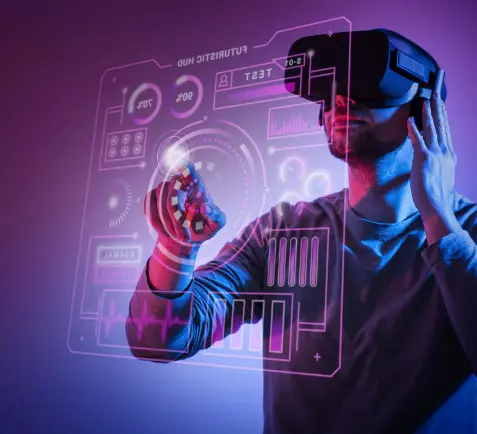5G, the most anticipated wireless network technology, is touted to alter the way people go about their daily lives at home and work. Its USP lies in being a lot faster with a capability to handle more connected devices than the existing 4G LTE network. The fastest 5G networks might be at least 10 times faster than 4G LTE, according to wireless industry trade group GSMA.
5G signals run over new radio frequencies, needing radios and other equipment on cell towers to be updated. A 5G network can be built using three methods depending on the type of assets of the wireless carrier: low-band network that covers a wide area but is only about 20% faster than 4G; high-band network that boasts of superfast speeds but they don’t travel well, especially through hard surfaces; and mid-band network which balances both speed and coverage.
Industry trade group GSMA estimates that by the year 2025, the number of 5G connections will reach 1.4 billion – 15 percent of the global total. Additionally, global IoT connections will triple to 25 billion by 2025, while global IoT revenue will quadruple to $1.1 trillion, according to this report published by GSMA.
Image Source: www.speedtest.net
How will 5G impact customer experience
Image Source: tmforum.org
The increased reliability, performance, and efficiency of the new spectrum will come as a boon while, at the same time, raise the bar for customer expectations. The intertwining of technology with our daily lives could also mean the proliferation of other technologies, including the Internet of Things (IoT), Augmented and Virtual Reality, Big Data, and Cloud Computing.
Consumers have regularly cited reliability as their biggest gripe with 4G networks. Over 4 out of 10 (43%) consumers say the internet on their mobile device “cuts in and out sometimes/is not always strong,” according to a PwC survey titled, The Promise of 5G: Consumers Are Intrigued, But Will They Pay?
According to Deloitte, India’s digital economy will exceed USD 1 trillion by 2025 as a result of increased smartphone usage, rapid internet penetration, and the advancement of mobile broadband and data connectivity. 5G, on the other hand, is likely to be the key catalyst of this expansion.
Video options, however, go beyond content consumption unto live support, too. For consumer-facing companies, live video support will open doors to better customer service, a crucial aspect of a good customer experience. A 5,000-person survey done by Oracle found that 75% of its respondents recognize the value and efficiency of voice and video chat. They also look forward to first-call resolutions.
Even for agents providing email support, a quick video explaining steps looks like a more efficient way to give a resolution instead of emails with a step-by-step guide, an aspect that companies can consider for seamless processes.
The GSM Association, an industry organization representing mobile network operators around the world, says the number of IoT connections worldwide will grow manifold between 2019 and 2025, to over 25 billion.
AR/VR capabilities and 5G
5G’s advent is a likely measure to “revolutionize” tech, especially through AR and VR. The high speed and low latency of 5G might imply that processing power could be moved to the cloud thereby allowing for more widespread use of VR/AR technology.
AR/VR technologies powered by high-speed 5G could help boost interest in newer concepts like virtual stores and the use of AR to experience products in their homes, or makeup on one’s face, and more. The combination of high speed and minimal lag is perfect for both VR and AR, which has a lot in store for the gaming community too. According to Nielsen’s study Augmented Retail: The New Consumer Reality released in 2019, many people are willing to use VR/AR to check out products.
That said, true VR/AR growth from 5G is difficult to predict since it also depends on the pace of customer and brand adoption. Nevertheless, its use in customer experiences will be interesting to watch in the coming years.
Big data processing power and 5G
AI and big data analytics are currently in use to identify customer patterns in order to personalize CX. 5G’s capabilities are likely to raise the bar on the volume of data companies collect and increase the pace at which AI can process it.
Faster speeds and lower latency lend themselves to an influx as they prepare for the next wave of automation and AI-backed technologies. Businesses will begin relying on mobile networks more frequently than before while streamlining core operations.
5G latency is expected to be faster than human visual processing, thus making it possible to control devices remotely effectively, in (almost) real-time.
Insurance and 5G
Image Source: www.capgemini.com
Insurance agencies rely on network carriers to share data for selling policies. With larger mounds of data widely available through 5G, agencies will be at an advantage to leverage more data without having to host or own it themselves. This means greater efficiency to navigate through data in a simpler manner.
The Internet of Things (IoT) has seemingly benefitted the auto insurance industry the most. The data is easier to generate, which includes the policyholder’s car details, mileage, speed, and overall usage of the car depending on each drive.
With IoT, a policyholder’s car isn’t the only thing that could help generate data. In case of a home fire, an oven could be used to collect data for requisite claim information. Likewise, a drone could share accurate location data.
Overall, agriculture, manufacturing, logistics, financial services will all benefit from lower latency, high speeds, thus ensuring an immersive experience for all.
Dogan Kaleli, CEO at Stere.io, Founder at Nion, wrote in ‘Why 5G is a Major Game-changer for the #Insurance Industry?‘ that 5G along with revolutionary technologies will mark the beginning of the 4th industrial revolution or the flywheel effect.
Knowledge thats worth delivered in your inbox






